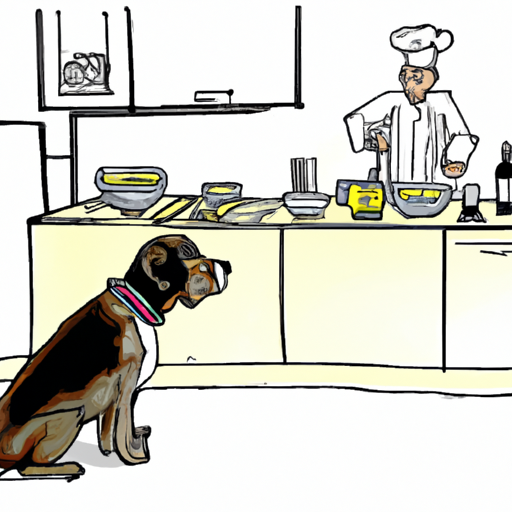Introduction
As a dedicated caregiver for your furry friend, you might be interested in exploring the world of homemade dog food. Not only is it a rewarding experience, but it also provides an opportunity to cater to your pet’s specific needs and preferences.
Understanding Your Dog’s Nutritional Needs
Before you start, it’s crucial to understand that dogs, like humans, have unique nutritional needs. They need a balanced diet that consists of:
- Proteins: They are the building blocks of cells and tissues. Sources include chicken, beef, fish, and eggs.
- Carbohydrates: They provide energy. Sources include potatoes, rice, and vegetables.
- Fats: They’re essential for brain development, skin health, and coat shine. Sources include oils, butter, and fat from meat.
- Vitamins and Minerals: They’re necessary for various bodily functions. They’re usually present in balanced amounts in commercial pet foods.
This table summarizes the recommended daily nutritional intake for dogs:
| Nutrient | Daily Requirement |
|---|---|
| Proteins | 20-25% |
| Carbohydrates | 50-55% |
| Fats | 15-20% |
| Vitamins and Minerals | Varied |
Basic Recipe for Homemade Dog Food
Now that you understand your dog’s nutritional needs, let’s dive into a simple, balanced recipe that you can prepare at home.
Ingredients
- 2 cups of protein source (chicken, beef, fish)
- 1 cup of carbohydrates (brown rice, potatoes)
- Half a cup of vegetables (carrots, peas)
- 1 tablespoon of fat source (olive oil, coconut oil)
Instructions
- Cook the protein source thoroughly. If using chicken or beef, make sure it’s fully cooked to kill any bacteria.
- Cook the carbohydrates. If using rice or potatoes, boil them until they’re soft.
- Steam the vegetables until they’re soft, but not mushy.
- Mix all the ingredients together in a large bowl. Add the fat source and mix well.
- Let the food cool before serving it to your dog.
Potential Health Benefits
Feeding your dog homemade food can have several potential health benefits:
- Improved Digestion: Homemade food is typically easier for dogs to digest, and it can help improve their bowel movements.
- Better Skin and Coat: The right balance of proteins, fats, and vitamins can lead to a shinier coat and healthier skin.
- Fewer Allergies: By controlling the ingredients, you can avoid potential allergens that are common in commercial dog foods.
FAQs
Q: Can I feed my dog only homemade food?
A: Yes, but you need to ensure it’s balanced and meets all their nutritional needs. Consult with a vet for advice.
Q: Can I use any vegetables in the dog food?
A: Most vegetables are safe, but some like onions and garlic are toxic to dogs. Always research before adding new ingredients.
Q: How often should I feed my dog homemade food?
A: It depends on their size, age, and activity level. Most dogs should eat 1-2 times per day.
Q: Can I add spices to the dog food?
A: Some spices are safe for dogs, but many are not. It’s best to avoid them unless you’re sure they’re safe.
In conclusion, cooking food for your dog can be a wonderful way to show your love and care. Just remember to keep their nutritional needs in mind and consult with a vet if you have any doubts. Happy cooking!



